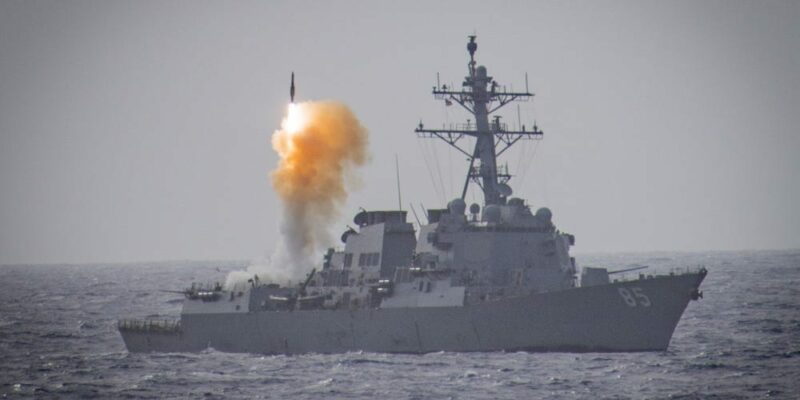The US Navy today operates the largest fleet of cruisers and destroyers on the planet, and the best armed. It thus lines up 84 cruisers and destroyers, ships of 9 to 000 tonnes armed with 10 to 000 vertical launch silos, or more than half of all vertical silos in the world.
While European specialists regularly complain about seeing their ships armed with only 16 or 32 silos, one might think that the US Navy was relatively confident in the available firepower of its escort ships.
However, it is she who has just accelerated the development of a microwave cannon designed to protect her destroyers in the future, fearing that its ships are under-armed to respond to this type of threat, faced with the arrival of naval attack drones, and anti-ship ballistic missiles, like those used by the Houthis in the Red Sea.
In this section:
96 vertical silos aboard US Navy Arleigh Burke destroyers
Very often, the US Navy has been ahead of its European counterparts in the field of naval combat technologies. This was particularly the case in the field of anti-aircraft defense, with the simultaneous arrival of the SPY-1 radar, the SM-2 missile and the AEGIS system, designed to respond to saturation attacks that could be launched by Soviet naval aviation. against NATO fleets during the Cold War.
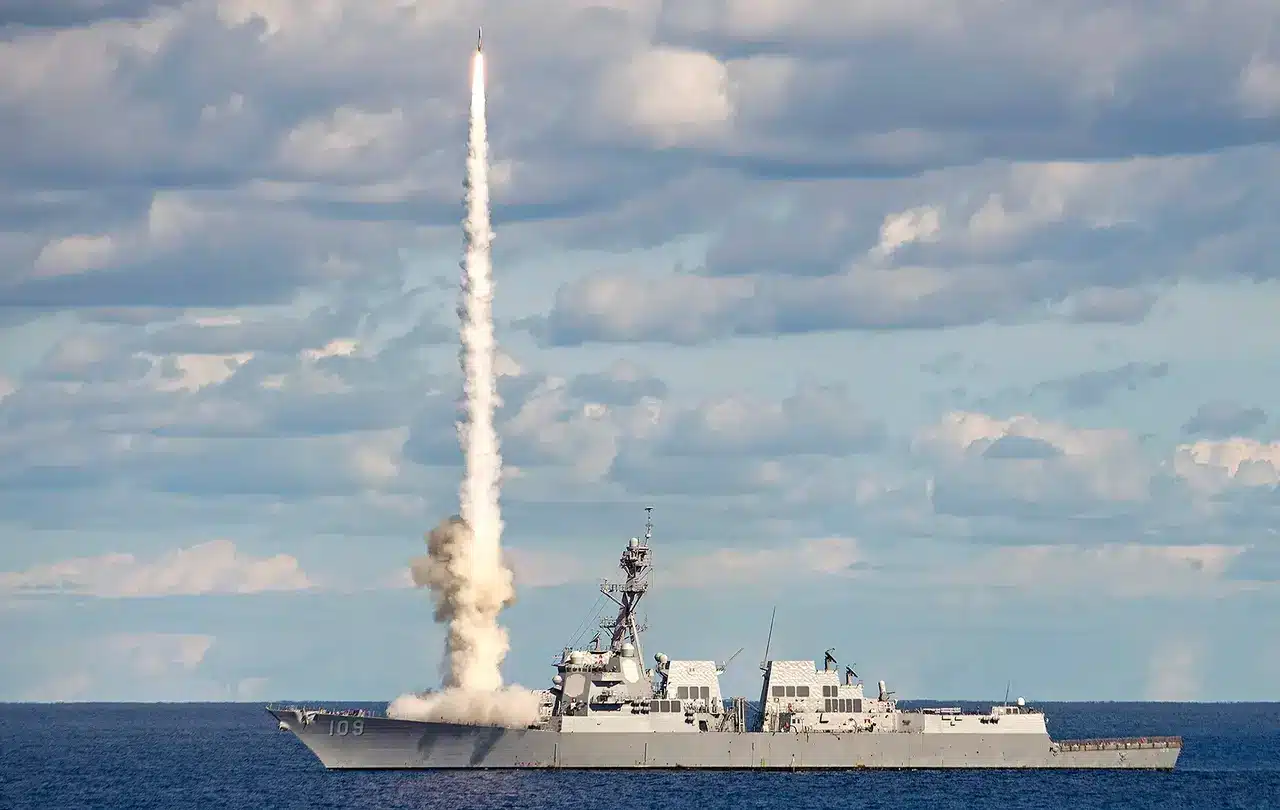
For the first time, a cruiser, the Ticonderoga class, and later a destroyer, the Arleigh Burke class, were able to deal with numerous air targets simultaneously, without having to dedicate a pointing radar to a single target.
Over the years, this technology has spread, in Europe and elsewhere. However, the US Navy has long retained the most efficient ships in the anti-aircraft field, combining imposing hulls, efficient technologies, and a “magazine depth”, the number of on-board missiles, unmatched, with the exception of the Kirovs. Russians with more numerous, but ancient, systems.
At least, until the arrival of heavy destroyers of the Japanese Kongo class, South Korean Sejong the Great and Chinese Type 055, which are now on par with its ships.
Thus, today, the US Navy's new Arleigh Burke Flight III class destroyers, a 155-meter ship with a tonnage of almost 10 tons, carry 000 vertical silos loaded with long-range anti-aircraft missiles SM -96, SM-2 anti-ballistic missiles, ESSM short- and medium-range anti-aircraft missiles (four per silo), SM-3 multi-purpose missiles and Tomahawk cruise missiles.
Added to this are a 127 mm cannon, a CIWS SeaRAM system and a Phalanx, as well as two triple torpedo tubes, making it undoubtedly one of the best armed ships of the moment, even if it no longer sits alone , at the top of the hierarchy. However, the Houthis experience in the Red Sea tends to shake up this certainty within the US Navy.
Missile consumption against Houthi drones and missiles worries the US Navy
Despite this arsenal which makes all European ships green with envy, the US Navy now believes that it could quickly face serious problems, highlighted by feedback from engagements in the Red Sea and in the Gulf of Aden, facing Houthi missiles and drones. His last ones might not have enough ammo.
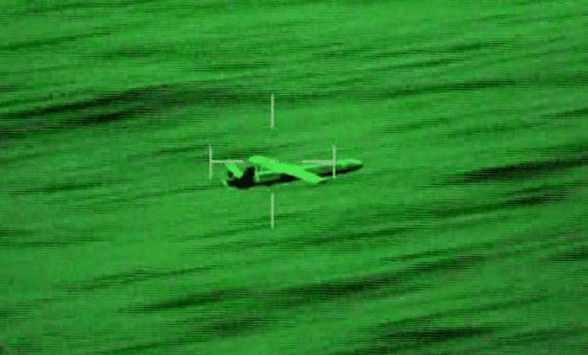
Indeed, it is making significant efforts to compensate for what it considers to be too limited a magazine depth for its destroyers, in the face of a threat which is rapidly evolving, on the one hand, towards attack drones, and on the other, towards ballistic anti-ship missiles.
Its destroyers, like the allied escorts deployed in the Red Sea to protect commercial naval traffic, must, in fact, very often use their precious SM-2 or ESSM missiles to intercept these Houthi drones and missiles.
However, if the economic exchange rate remains positive or neutral, when it comes to intercepting a cruise missile or an anti-ship ballistic missile, effectively limiting, over time, the opposing threat, this is not the case for drones, much more economical to produce.
In fact, despite much weaker resources, the Houthis manage, with the help of Iran, to produce many of these drones, which empty the stores of its destroyers as much as the more expensive missiles, to the point that they must reduce the duration of their mission, to reload their silos, while generating significant additional costs to the US Navy budget, as for the allied navies, without this exhausting, to the same level, the Houthi resources.

Above all, this observation implies that a time will probably arrive when the adversary will be able to simultaneously send a large number of these drones, to saturate the defenses and empty the destroyer's magazine.
Even if this attempt failed, the ship would then be at the mercy of an attack using heavier, more expensive, and much more destructive means, such as cruise missiles and anti-ship ballistic missiles, to overcome it.
A microwave cannon for 2026 to deal with the drone threat
The simplest and quickest solution to respond to this type of threat would be to reinforce the ships' naval artillery. However, the US Navy is not very good at keeping things simple. It therefore engaged in the development of several directed energy weapons, high energy lasers, on the one hand, and microwave cannons, on the other.
Much more complex, and infinitely more expensive to design, these systems, however, have exclusive advantages. Thus, both do not require any notion of ammunition: as long as the ship can produce electrical energy in sufficient quantity, it is able to power these systems, and therefore, theoretically, to fire .
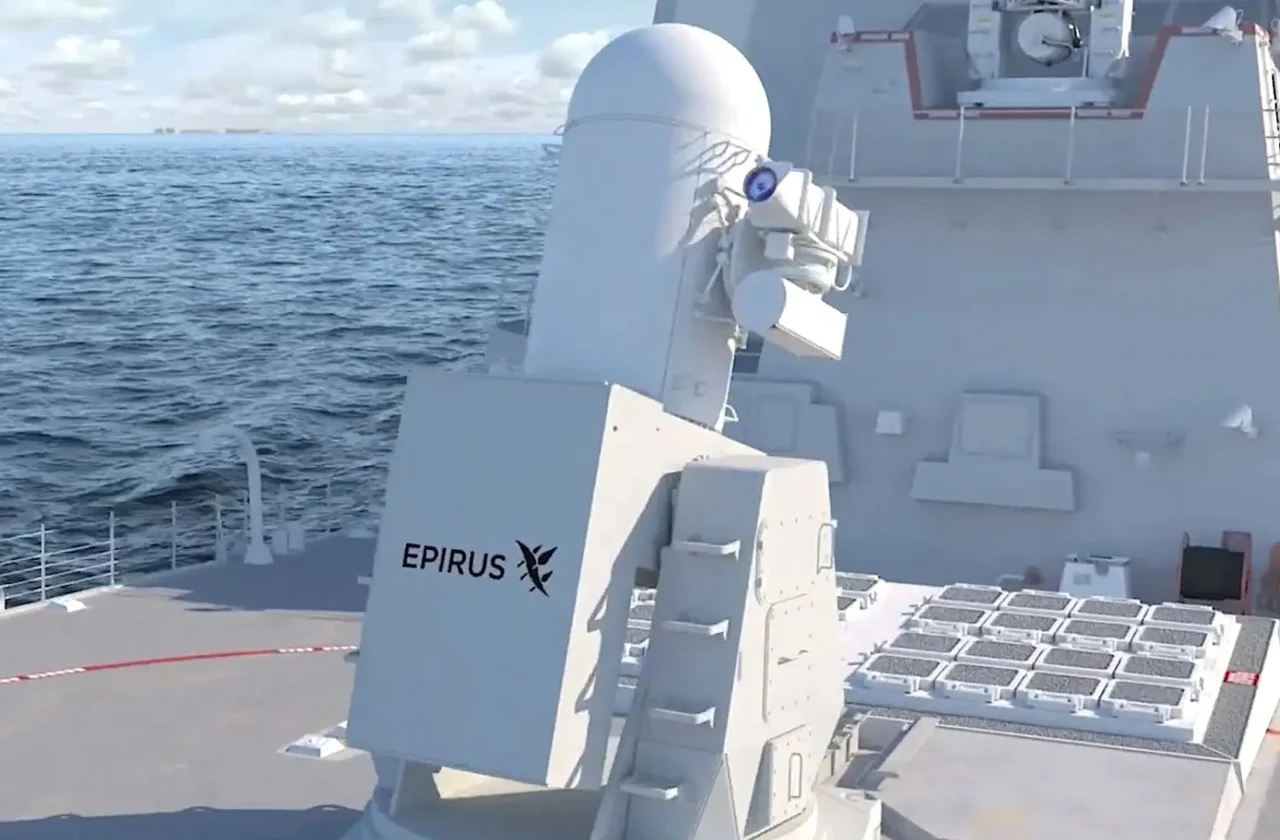
They also constitute a solution to saturation attacks. The laser can thus quickly treat numerous targets, while the microwave cannon, for its part, can eliminate all electronic systems present in a targeted airspace.
If the program aimed at equipping US Navy ships with a high-energy laser is well known, that aimed at placing a microwave cannon there is, for its part, more confidential. However, in its 2025 budget currently being negotiated, the US Navy plans precisely to finance the development of a solution of this type, which must begin a test campaign from 2026.
Anti-ship ballistic missiles, a threat difficult to control, which will quickly become global
As reported by the American site The War Zone, the effort produced by the US Navy in these two areas, aims above all to address the threat posed by the proliferation of drones, and more specifically, attack drones and lurking munitions, used massively in Yemen.
However, a new concern has been added in recent weeks to its technological planning. Indeed, the regular use of anti-ship ballistic missiles by the Houthi rebels constitutes a major challenge for Western escort ships, only a small number of which are able to provide protection against this new threat.
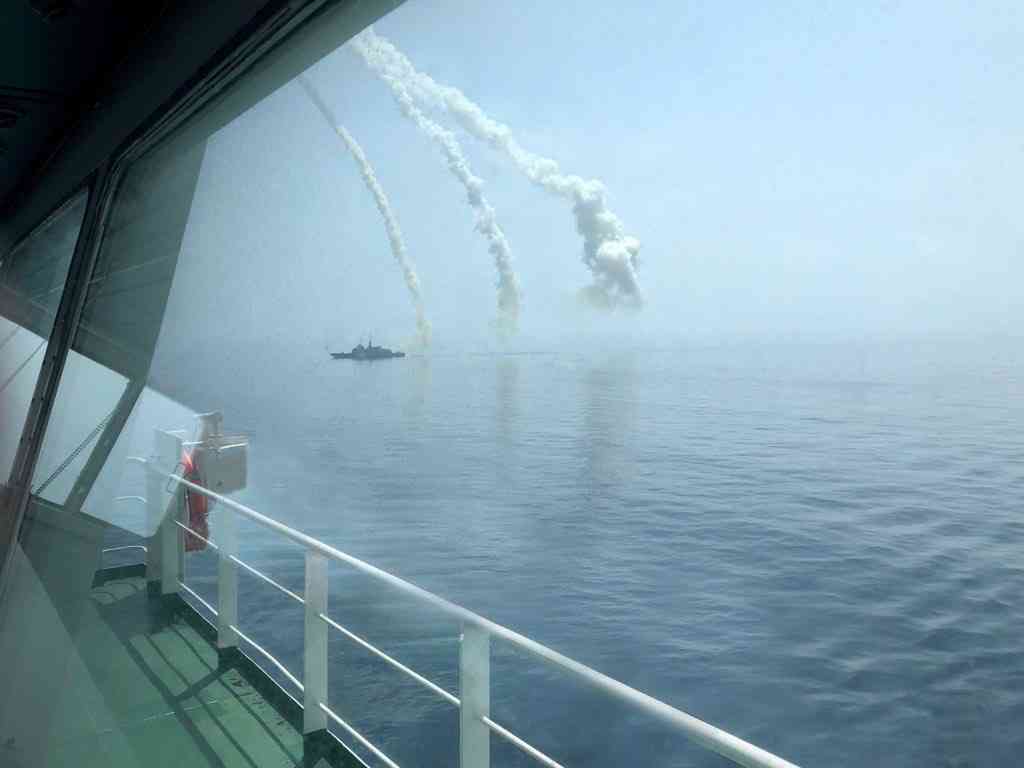
Furthermore, if attack drones and anti-ship missiles, including ballistic missiles, have reached Yemen, a particularly poor country, thanks to the support of Iran, we can expect that these technologies and doctrines will be are rapidly spreading, as will undoubtedly be the case, with surface attack drones deployed in Ukraine.
Indeed, Iran, but also Russia and North Korea, certainly have every interest in multiplying similar points of contestation, in particular against Western navies, to increase their dispersion, their risks and their consumption of munitions, so as to reduce the pressure they put on these countries.
Conclusion
Obviously, the US Navy anticipates, in its own way, a rapid evolution in the field of naval combat, generated by the massive arrival of air and surface attack drones, but also by the globalization of drone technology. anti-ship ballistic missiles.
As is often the case, it has set the bar very high, by directly aiming to equip itself with directed energy weapons, high-energy lasers and microwave cannons, with the aim of delegating the destruction of these drones to them in large part. high saturation potential, to concentrate the use of its difficult to expand missile magazine, against targets with higher potential, such as anti-ship cruise and ballistic missiles.
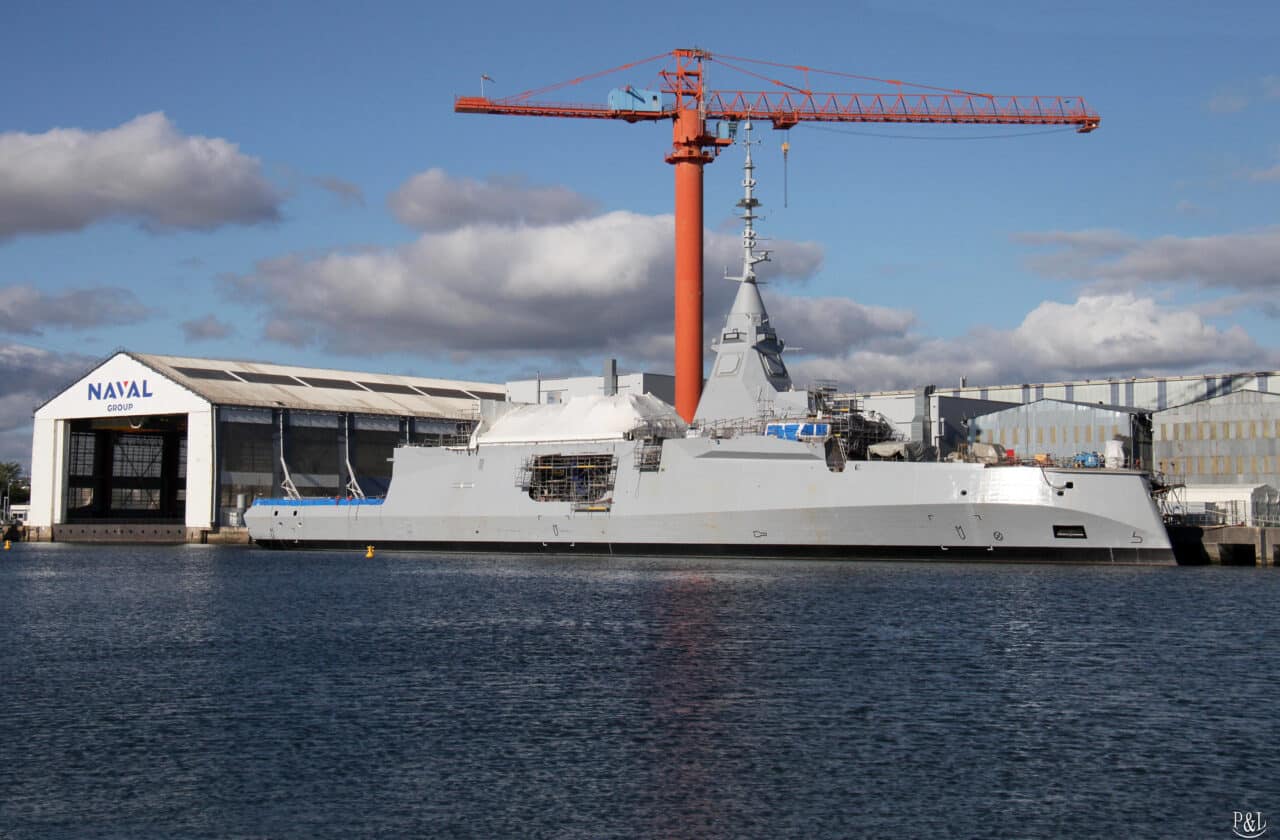
If the choice of energy armies led by the US Navy, rather than naval artillery, can be subject to debate, the observation of the transformation of the threat, requiring a radical transformation of the interception capabilities of naval ships escort, is difficult to contest, as is its timetable, highlighted by the urgency of American programs.
It will certainly be essential for European navies to follow the same path, if not technological, in any case doctrinal, so as not to find ourselves, quite simply, excluded from numerous theaters of naval intervention, due to lack of suitable firepower, in low-cost systems against drones, but also in high-performance missiles against ballistic missiles, to respond to the reality of the threat.
Article from April 2 in full version until May 11, 2024


